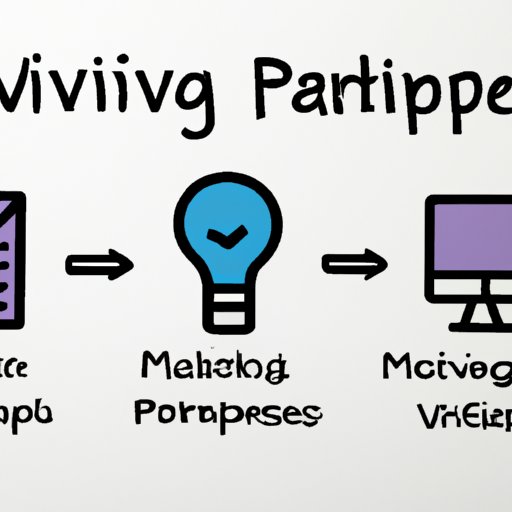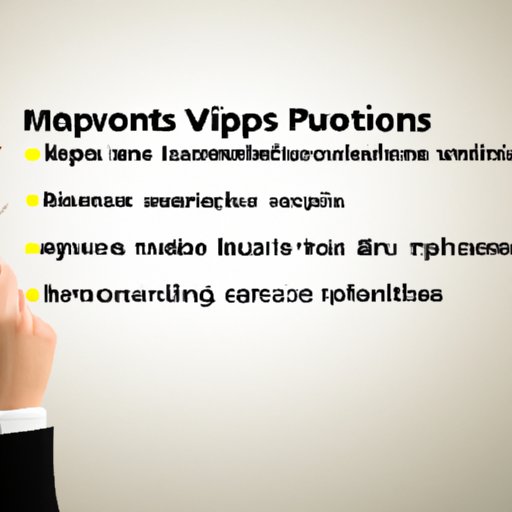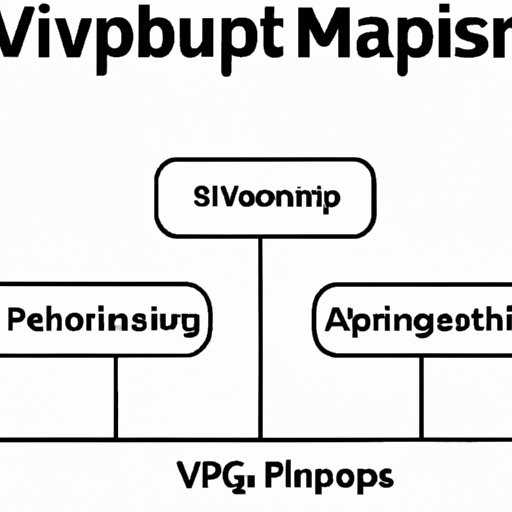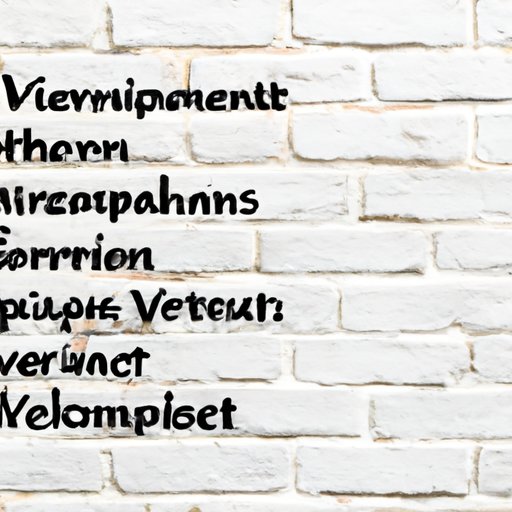Introduction
Minimum Viable Product (MVP) is a development technique used in technology projects to create a basic version of a product or service. It is designed to test the feasibility of an idea before further development is undertaken. The goal of MVPs is to maximize learning with minimal resources, allowing developers to quickly and cost-effectively identify areas where product improvements can be made.
The purpose of this article is to explore the meaning of MVP in technology and to analyze the benefits and challenges associated with using MVPs. Additionally, the article will look at current trends and best practices for implementing MVPs in technology projects.
Exploring the Meaning of MVP in Technology: A Definition and Examples
Before exploring the use of MVPs in technology, it is important to understand the definition of MVP. According to the Lean Startup methodology, an MVP is “a version of a new product which allows a team to collect the maximum amount of validated learning about customers with the least effort.” Essentially, the goal of an MVP is to test the viability of a product or service without investing too much time or money in its development.
To illustrate the concept of an MVP, let’s consider the example of a mobile app. A developer may begin by creating a basic version of the app to test its functionality. This version would include only the most essential features, such as user registration, login, and navigation. From there, the developer could test the app with a small group of users to gauge their reaction and identify any potential issues. Based on the feedback from these users, the developer can then decide whether to continue developing the app or pivot to a different project.

How MVPs are Used in Technology Projects
MVPs are often used in technology projects to reduce risk and accelerate the development process. By testing an idea with a minimum viable product, developers can save time and money by avoiding costly mistakes and refining their product before making a significant investment.
In addition, MVPs allow developers to gain valuable insights from real users. By testing an MVP with a small group of users, developers can get feedback on the product and identify areas where improvements can be made. This insight can help inform the development process and ensure that the final product meets customer needs.
What Are the Benefits of Using MVPs in Technology Projects?
The primary benefit of using MVPs in technology projects is that it enables developers to quickly test an idea with minimal resources. By creating a basic version of a product, developers can quickly assess the viability of an idea and make decisions about how to move forward. This reduces risk and saves time and money.
In addition, MVPs allow developers to gain valuable insights into customer needs and preferences. By testing an MVP with a small group of users, developers can get feedback on the product and identify areas where improvements can be made. This helps developers create products that meet customer needs and improve the overall user experience.
What Challenges Are Associated with Using MVPs in Technology Projects?
While MVPs can provide many benefits, they also come with some challenges. One challenge is that MVPs can be difficult to design and develop. Creating a basic version of a product requires developers to carefully consider which features are essential and which can be omitted. Additionally, the development process must be closely monitored to ensure that the MVP does not become overly complex.
Another challenge is that MVPs may not always accurately reflect customer needs. While testing an MVP with a small group of users can provide valuable insights, the feedback may not be representative of the larger population. Therefore, it is important to consider how the results of the MVP testing may differ from the results of a full product launch.
What Can We Learn From MVPs in Technology?
By analyzing the benefits and challenges of MVPs in technology, we can gain a better understanding of how they can be used effectively. To begin, let’s look at the benefits of MVPs in technology.

Analyzing the Benefits of MVPs in Technology
As discussed earlier, the primary benefit of using MVPs in technology projects is that it enables developers to quickly test an idea with minimal resources. By creating a basic version of a product, developers can quickly assess the viability of an idea and make decisions about how to move forward.
Additionally, MVPs allow developers to gain valuable insights into customer needs and preferences. By testing an MVP with a small group of users, developers can get feedback on the product and identify areas where improvements can be made. This helps developers create products that meet customer needs and improve the overall user experience.

Understanding the Challenges of MVPs in Technology
While MVPs can provide many benefits, they also come with some challenges. One challenge is that MVPs can be difficult to design and develop. Additionally, the results of the MVP testing may not always accurately reflect customer needs. Therefore, it is important to consider how the results of the MVP testing may differ from the results of a full product launch.
Understanding MVPs in Technology: Trends and Best Practices
Now that we have explored the benefits and challenges of MVPs in technology, let’s look at some of the current trends and best practices for implementing them. According to a survey conducted by the Software Development Times, the most popular trend in MVPs is the use of Agile methodology. Agile is a popular approach to software development that emphasizes rapid iteration and collaboration between developers, designers, and stakeholders. Additionally, the survey found that the most successful MVPs are those that focus on solving a specific problem, rather than trying to do too much.
When it comes to best practices for implementing MVPs, the survey found that the most successful MVPs are those that are built around customer feedback. This means that developers should test their MVPs with a small group of users and solicit feedback throughout the development process. Additionally, developers should focus on the core features of the product and strive to keep the MVP as simple as possible.
Conclusion
In conclusion, Minimum Viable Products (MVPs) are a development technique used in technology projects to create a basic version of a product or service. Their primary benefit is that they enable developers to quickly test an idea with minimal resources. However, they also come with some challenges, such as difficulty designing and developing an MVP and the potential for the results of the MVP testing to not accurately reflect customer needs.
Finally, the current trends in MVPs in technology are the use of Agile methodology and focusing on solving a specific problem. Additionally, the best practices for implementing MVPs include building the MVP around customer feedback and focusing on the core features of the product.
Overall, MVPs in technology can be a powerful tool for reducing risk and accelerating the development process. By understanding the benefits and challenges of MVPs, developers can make informed decisions about how to use them effectively in their projects.
(Note: Is this article not meeting your expectations? Do you have knowledge or insights to share? Unlock new opportunities and expand your reach by joining our authors team. Click Registration to join us and share your expertise with our readers.)
